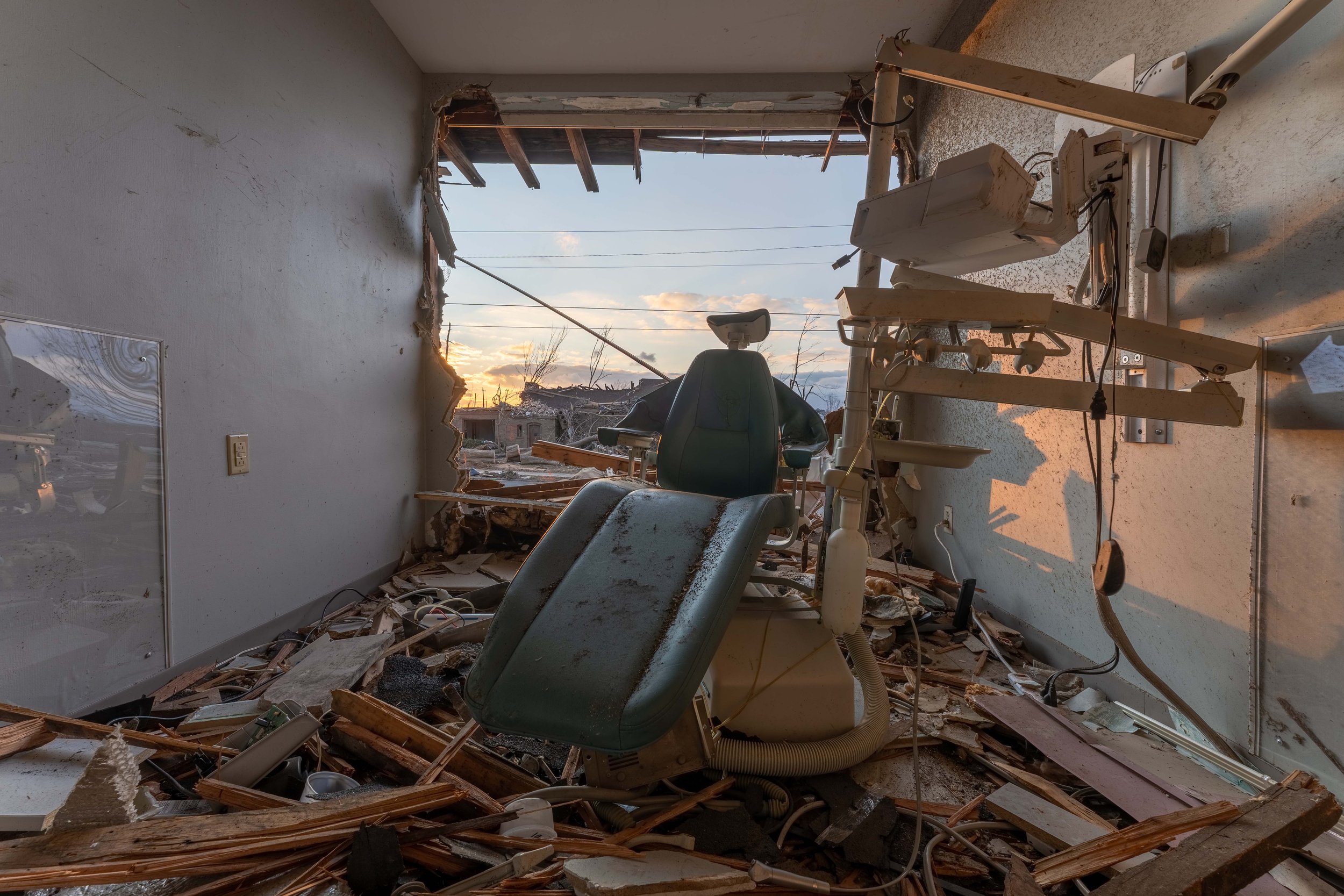On December 10, 2021 an EF4 tornado, also knows as a category 4 tornado, ripped through four different states, Kentucky, Tennessee, Missouri, and Arkansas. Unfortunately, Western Kentucky seemed to have taken the brunt of the super cell storm. The tornado ripped through and completely destroyed many cities across western Kentucky. Mayfield, a small quiet city with a population of approximately 10,000 people, got the worst of it all. The category 4 tornado had both down pouring rain and extreme winds that reached up to nearly 200 miles an hour.
Photo by: @sketchyjawns
Those fierce winds caused debris, including houses and vehicles, to be thrown nearly 30,000 feet into the sky, which is the same height that most jets fly. It all started on December 8th 2021 when the Storm Prediction Center announced a “high risk” for severe weather along the states near the Mississippi River Valley. Forecasters indicated that atmospheric conditions favored the development of nocturnal supercells capable of producing long-tracked, strong-winded tornadoes for that geographical region.
Two days later, on December 10, 2021 both the Storm Prediction Center and the National Weather Service issued their first of what would eventually become 149 tornado warnings for the already high risk area in the Mississippi River valley. One of the main problems for tracking these tornados, was that the supercell storm generated multiple tornados with extreme rainfall, in some cases 3-4 tornados at the same time. The first major tornado touched down on December 10, 2021 at 8:49 pm in the small town of woodland Mills, Tennessee, which was located in the northwestern corner of the state. As it moved northeast toward the Kentucky border, it had already caused significant damage to trees, power lines, and peoples homes throughout “oh buy in” Obion County, Tennessee. By the time the twister had crossed into Kentucky and reached the small community of Cayce, Kentucky it had reached Category 4 intensity, causing several buildings to collapse and even killing one person.
As the twister moved north from Cayce into Hickman County, Kentucky it had weakened to category 3, but still managed to destroy several farms in the area. From Hickman County Kentucky the storm moved northeast toward Graves County, Kentucky. It seemed to have weakened to a category 2 as it crossed into Graves County, Kentucky. Suddenly the tornado seemed to instantly gain strength and power as it paralleled Interstate 69 and headed toward mayfield, Kentucky. At 9:26 pm, the National Weather Service announced a tornado emergency for the City of Mayfield, as the now massive tornado had again reached category 4 strength, had touched down, and was headed straight for Mayfield. Within minutes, peoples homes were leveled and swept from their foundations. Trees in this area were stripped and debarked, power lines were knocked to the ground, cars were thrown, and mobile homes were completely obliterated.
Even large semi-trucks, tankers, and other heavy industrial vehicles were thrown and destroyed as well, some of which were left unrecognizable. The most tragic of the storm’s devastation was when it collapsed a large candle factory, known as Mayfield Consumer Products. The giant metal warehouse completely collapsed and was flattened to the ground, trapping approximately 110 employees working inside the factory. Initially it was feared that most of the employees were dead, but search and rescue teams were able to save most of them. In the end, 8 employees had tragically lost their lives. Allegedly, the employees wanted to leave, but couldn’t as their jobs were threatened if they left the factory.
After the tornado destroyed the candle factory, it intensified even further, nearly reaching category 5 intensity as it tore directly through the center of town, resulting in widespread, catastrophic damage throughout the historic downtown square of Mayfield. Most of the structures in downtown Mayfield were heavily damaged and destroyed, including multiple large, well-built, multi-story brick buildings that completely collapsed. Only large piles of bricks and lumber remained in the hardest-hit portions of the downtown area, and vehicles and streets were left buried under debris. As the twister moved out of downtown mayfield, it screamed like a freight train almost as if it was angrier then ever. On its way out of town, it ripped and mangled the residential neighborhoods toppling approximately 15,000 residential homes.
When it was all over with, the drastic and lethal tornado had been one of the deadliest tornados in recoded in recent history, with a final death toll of 58. It’s path was also the 9th longest in history measuring at approximately 165 miles and lasting nearly 3 hours.



